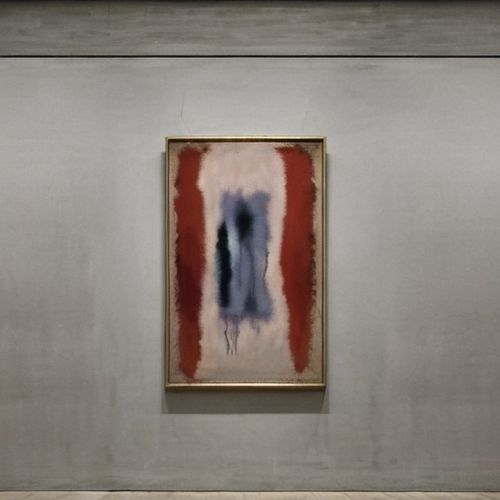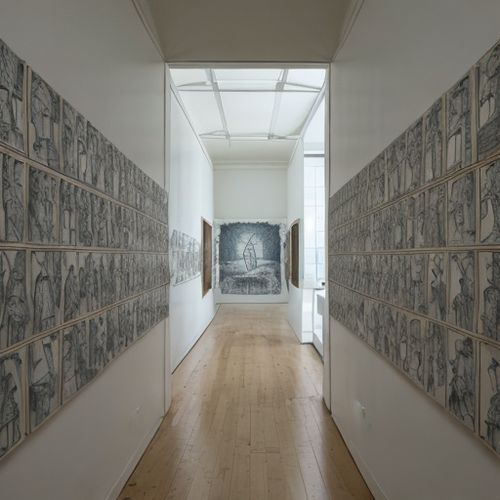In the world of art, where masterpieces are often celebrated and meticulously preserved, the story of a lost Andy Warhol silkscreen print serves as a stark reminder of the fragility of cultural heritage. The print, depicting the Netherlands’ then-Queen Beatrix in Warhol’s iconic pop art style, was accidentally disposed of as “bulky waste” during a reorganization at the Maashorst municipality town hall. This incident, though seemingly isolated, highlights the broader challenges faced by institutions in safeguarding valuable artworks.
The print, created in the 1980s, was part of a collection that included 45 other works, all of which were lost in a similar manner. According to a statement issued by the Maashorst municipality, the artworks were stored in the town hall’s basement while the building underwent renovations. However, due to a series of unfortunate events, including unprotected storage, multiple relocations, and water damage from a leak in 2023, the artworks were misplaced and eventually discarded. The total value of the lost works was estimated at around 22,000 euros ($25,000), a significant loss for any institution.
The local authority, recognizing the gravity of the situation, commissioned an independent agency to investigate the incident. The investigation revealed that the artworks were discovered missing in November, and their disappearance was reported to the police. However, the report concluded that the local authority did not act quickly enough to prevent the artworks from being thrown out. The exact circumstances leading to the lapse remain unclear, and it is uncertain which officials were responsible for the disposal.
This is not the first time that an artwork has been accidentally thrown away. In October, an elevator technician working at a museum elsewhere in the Netherlands mistakenly discarded a piece of artwork made to look like two empty beer cans. Fortunately, the cans were later recovered from a trash bag, cleaned, and displayed on a traditional plinth at the museum entrance. This incident underscores the importance of vigilance and proper handling procedures in the care of artworks.
The loss of the Warhol print and the other artworks is a poignant reminder of the challenges faced by institutions in protecting their collections. Artworks, especially those of significant historical and cultural value, require careful handling and secure storage to ensure their longevity. The incident at the Maashorst municipality highlights the need for robust protocols and oversight to prevent such mishaps.
In the broader context of art conservation, this incident serves as a cautionary tale. Museums and galleries must implement stringent measures to safeguard their collections, especially during periods of renovation or reorganization. This includes proper documentation, secure storage, and regular inventory checks. Additionally, staff training on the importance of art conservation and the proper handling of artworks is crucial in preventing accidental losses.
The loss of the Warhol print is particularly poignant given Warhol’s own fascination with the mundane and the everyday. Known for creating art from garbage cans, Warhol might not have anticipated that one of his works would end up in the trash. His art often explored themes of consumerism and the disposable nature of modern society, making the accidental disposal of his print a bitter irony.
The incident also raises questions about the role of local authorities in preserving cultural heritage. Municipalities and other public institutions often hold significant collections of artworks, entrusted to them for safekeeping. The loss of these works not only represents a financial loss but also a loss of cultural heritage. It underscores the importance of public institutions in safeguarding and promoting the arts, ensuring that valuable artworks are preserved for future generations.
The accidental disposal of Andy Warhol’s silkscreen print and other artworks at the Maashorst municipality is a stark reminder of the challenges faced by institutions in safeguarding cultural heritage. It highlights the need for robust protocols, staff training, and proper handling procedures to prevent such mishaps. As we reflect on this incident, we are reminded of the enduring value of art and the collective responsibility we share in protecting it. The loss of these artworks serves as a poignant lesson in the importance of vigilance and the fragility of our cultural heritage.

By Joshua Howard/May 14, 2025

By Samuel Cooper/May 14, 2025

By Victoria Gonzalez/May 14, 2025

By Elizabeth Taylor/May 14, 2025

By Sophia Lewis/May 14, 2025

By Thomas Roberts/May 14, 2025

By Sophia Lewis/May 14, 2025

By James Moore/May 14, 2025

By Christopher Harris/May 14, 2025

By Megan Clark/May 14, 2025

By Lily Simpson/May 14, 2025

By Rebecca Stewart/May 14, 2025

By Thomas Roberts/May 14, 2025

By Grace Cox/May 14, 2025

By Sarah Davis/May 14, 2025

By Megan Clark/May 14, 2025

By Jessica Lee/May 14, 2025

By James Moore/May 14, 2025

By Samuel Cooper/May 14, 2025

By George Bailey/May 14, 2025